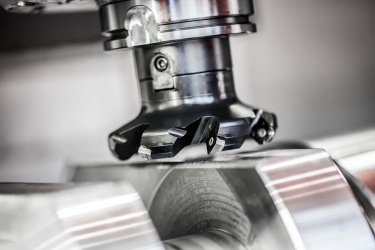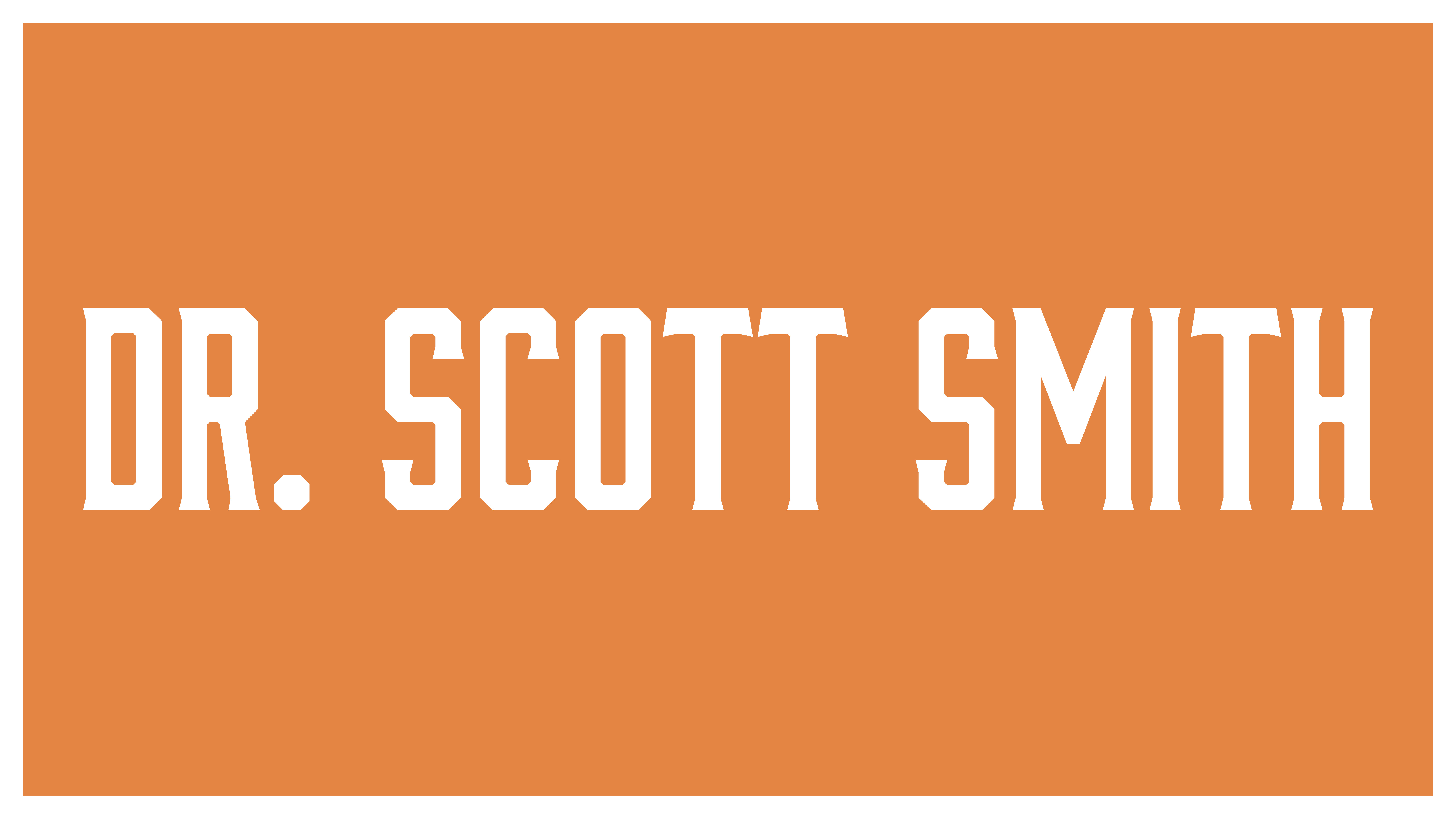
Milling is a complex process bound by multiple constraints. Successful milling requires selection of cutting parameters that respect the constraints. Presented here are explanations about six of those constraints.
Bending moment. The bending moment equals the cutting force times the distance from the cutting zone to the toolholder/spindle interface. If the bending moment is too great, the shank of a slender tool may break or separation can occur where the toolholder face contacts the spindle, allowing the toolholder to pull out of the spindle. That’s especially problematic for HSK holders because they derive their stiffness from the face contact. The bending moment can be reduced by shortening the tool or by reducing the cutting force, which requires reducing the axial DOC, radial WOC or the chip load. For most tools, the chatter limit is reached long before a shank breaks.
Chatter. Chatter generation is a limiting factor when milling, particularly when the objective is to have the metal-removal rate as high as possible. Chatter arises due to insufficient dynamic stiffness, which, in turn, is caused by long slender tools, small-diameter spindles (due to the DN limitation, where D is the diameter of the main bearing bore, and N is the spindle speed), thin workpieces (although a good machining strategy can usually avoid this) and the low-damping characteristics common in mechanical systems. Strategies to avoid chatter without changing the machine or tooling configuration include selecting the cutting conditions based on a stability lobe diagram, reducing the axial DOC and/or radial WOC and choosing a low spindle speed to enhance the process damping effect. Strategies that change the machine and tooling configuration include adjusting the tool length (usually shorter is better, but not always) and applying tools with nonproportionally spaced teeth.
Tool/workpiece wear mechanisms. The strength of the cutting edge limits the chip load, and this limit is usually specified by the manufacturer. Edge strength does not limit the axial DOC because, as the tool cuts deeper, there is more cutting edge to carry the load. Several tool wear mechanisms, including diffusion and oxidation, are strongly temperature-dependent, and this kind of tool wear places a surface speed limit, which is a spindle speed limit, on milling. Similarly, some tools exhibit thermal softening at high temperatures, increasing the abrasion and attrition wear mechanisms, again limiting spindle speed. Strategies to avoid this limit include lowering the spindle speed, changing the tool material, adding a coating or using a small radial WOC.
Available power. The power consumed in the cut is proportional to the mrr. Each workpiece material has a specific power (power per mrr), which can be experimentally determined or found in a reference source. A cut that consumes more power than the machine can deliver will stall the spindle. If the combination of machine, tool and workpiece is dynamically stiff enough, it is possible to reach the power limit in stable milling. However, even for the stiffest machines, there are usually some tools that are not power limited. Strategies to avoid this limit include reducing the size of the cut or softening the workpiece material, such as in laser-assisted machining.
Tool geometry. Clearly, it is not advisable to choose an axial DOC larger than the length of the cutting edge, or to choose a chip load so large that there is not enough room for the curled chip between the tool’s teeth. Other geometry limitations are more subtle. For example, selecting a chip load smaller than the cutting edge radius generates a large plowing force, almost like burnishing. Similarly, tool orientations that result in cutting close to the tool center on a ballnose endmill result in surface speeds close to zero, and plowing rather than cutting occurs.
Workpiece geometry. The required surface finish limits the chip load. Even if the tool and workpiece were absolutely rigid, the surface created by the periphery of an endmill is produced by a series of nearly circular arcs at the tool radius, separated by the chip load. Even a perfectly created surface will have a series of cusps that define its roughness. Their height can be limited—producing a smoother surface—by limiting the chip load. In a similar way, surface roughness limits the step-over when ballnose endmilling. The cutting edges at the end of a ballnose tool create the as a series of grooves with nearly circular cross sections. For a “perfect” tool and workpiece, the height of the cusps between the grooves defines the surface finish, and the finish can be improved (and the machining time increased) by reducing the step-over between passes.
Additional constraints exist, and successful milling requires managing all the constraints simultaneously. Knowledge of the constraints is the first step in managing them.
Related Glossary Terms
- burnishing
burnishing
Finishing method by means of compressing or cold-working the workpiece surface with carbide rollers called burnishing rolls or burnishers.
- chatter
chatter
Condition of vibration involving the machine, workpiece and cutting tool. Once this condition arises, it is often self-sustaining until the problem is corrected. Chatter can be identified when lines or grooves appear at regular intervals in the workpiece. These lines or grooves are caused by the teeth of the cutter as they vibrate in and out of the workpiece and their spacing depends on the frequency of vibration.
- cutting force
cutting force
Engagement of a tool’s cutting edge with a workpiece generates a cutting force. Such a cutting force combines tangential, feed and radial forces, which can be measured by a dynamometer. Of the three cutting force components, tangential force is the greatest. Tangential force generates torque and accounts for more than 95 percent of the machining power. See dynamometer.
- diffusion
diffusion
1. Spreading of a constituent in a gas, liquid or solid, tending to make the composition of all parts uniform. 2. Spontaneous movement of atoms or molecules to new sites within a material.
- dynamic stiffness
dynamic stiffness
Measure of a machining system’s ability to dampen vibration from a forced input. If the dynamic stiffness of a system is not sufficient to dampen vibration, chatter occurs. See static stiffness; stiffness.
- endmill
endmill
Milling cutter held by its shank that cuts on its periphery and, if so configured, on its free end. Takes a variety of shapes (single- and double-end, roughing, ballnose and cup-end) and sizes (stub, medium, long and extra-long). Also comes with differing numbers of flutes.
- endmilling
endmilling
Operation in which the cutter is mounted on the machine’s spindle rather than on an arbor. Commonly associated with facing operations on a milling machine.
- gang cutting ( milling)
gang cutting ( milling)
Machining with several cutters mounted on a single arbor, generally for simultaneous cutting.
- metal-removal rate
metal-removal rate
Rate at which metal is removed from an unfinished part, measured in cubic inches or cubic centimeters per minute.
- milling
milling
Machining operation in which metal or other material is removed by applying power to a rotating cutter. In vertical milling, the cutting tool is mounted vertically on the spindle. In horizontal milling, the cutting tool is mounted horizontally, either directly on the spindle or on an arbor. Horizontal milling is further broken down into conventional milling, where the cutter rotates opposite the direction of feed, or “up” into the workpiece; and climb milling, where the cutter rotates in the direction of feed, or “down” into the workpiece. Milling operations include plane or surface milling, endmilling, facemilling, angle milling, form milling and profiling.
- shank
shank
Main body of a tool; the portion of a drill or similar end-held tool that fits into a collet, chuck or similar mounting device.
- step-over
step-over
Distance between the passes of the toolpath; the path spacing. The distance the tool will move horizontally when making the next pass. Too great of a step-over will cause difficulty machining because there will be too much pressure on the tool as it is trying to cut with too much of its surface area.
- stiffness
stiffness
1. Ability of a material or part to resist elastic deflection. 2. The rate of stress with respect to strain; the greater the stress required to produce a given strain, the stiffer the material is said to be. See dynamic stiffness; static stiffness.
- toolholder
toolholder
Secures a cutting tool during a machining operation. Basic types include block, cartridge, chuck, collet, fixed, modular, quick-change and rotating.

